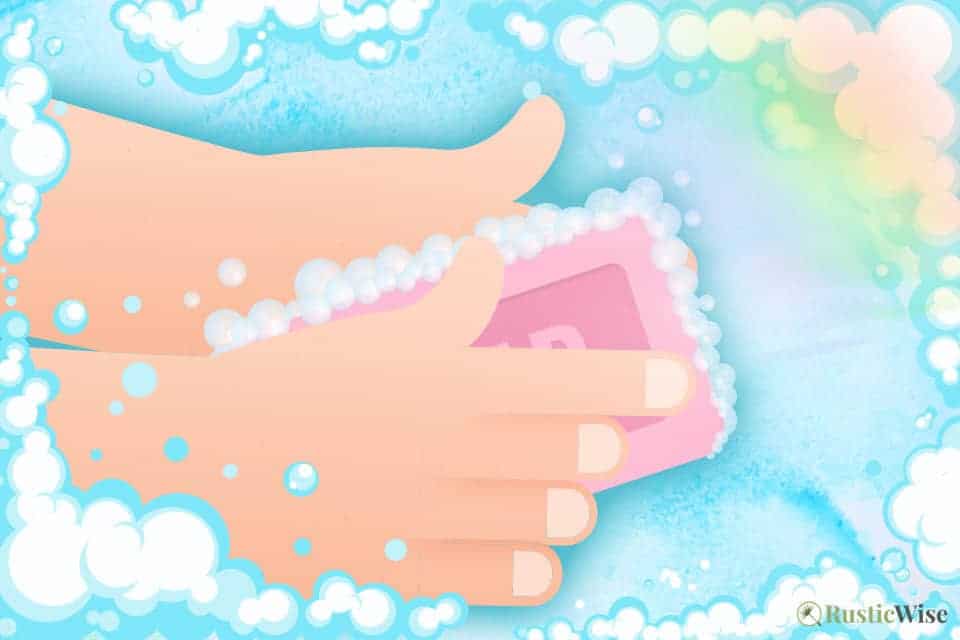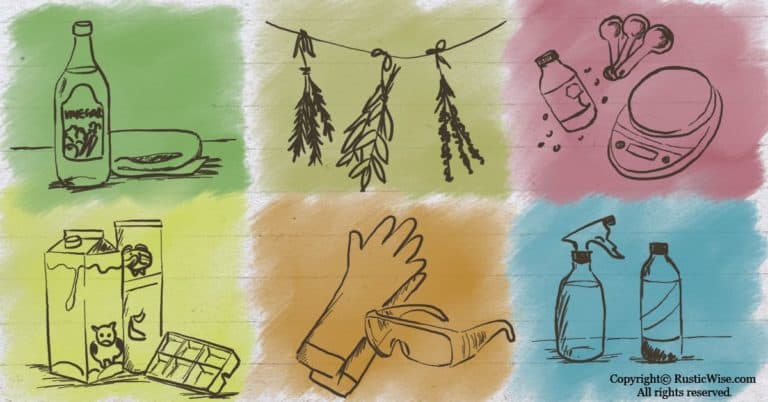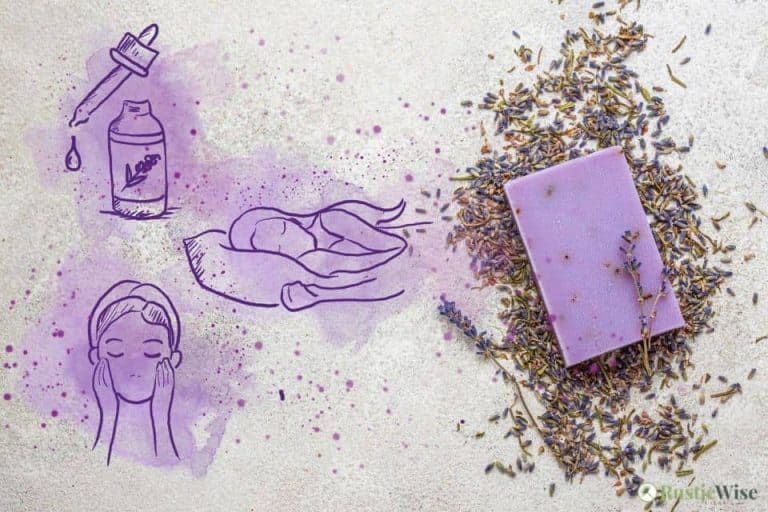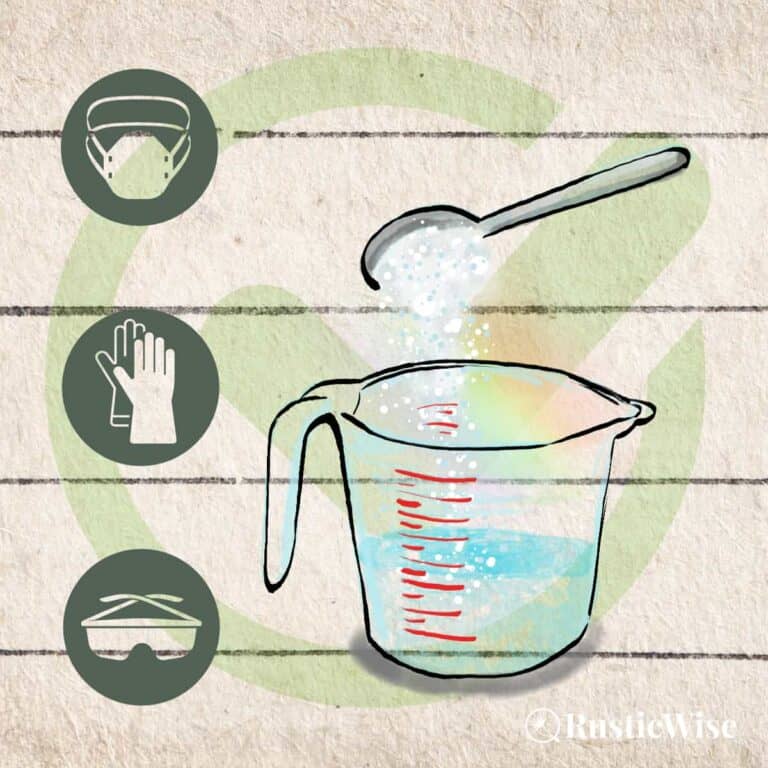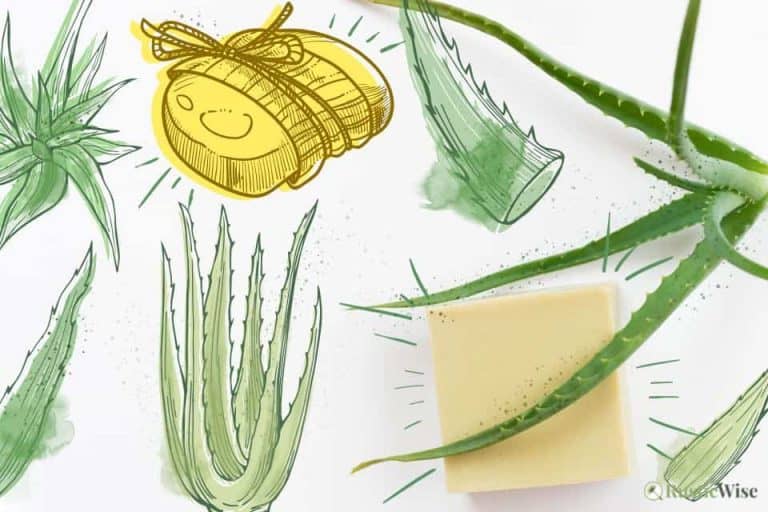How To Make Melt and Pour Soap Lather More: 5 Troubleshooting Tips
Does your new batch of melt and pour soap lack lather and bubbles?
If you’re wondering how to make melt and pour soap lather more, sadly, there’s not much you can do. As melt and pour soap bases come fully saponified, adding extra oils or sugar will not do much (if anything) to boost lather. Adding too many extra additives to M & P soap may actually make your bar lather less.
But not all hope is lost! If your batch of soap didn’t turn out, let’s find out why. I’ll share 5 troubleshooting tips to help you improve your soap for next time.
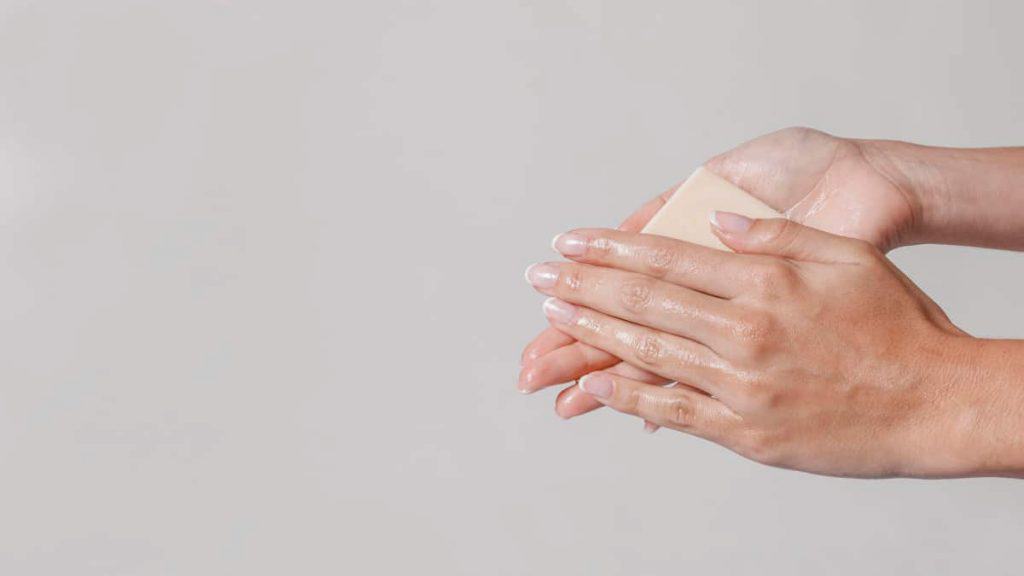
Why tips for cold process or hot process don’t always apply to M & P soap
In the world of soap making, it’s all about the saponification process, or the science behind converting oil and fat molecules into soap.
When you make soap from scratch with lye using either the cold process or hot process methods, you can tailor the properties of the finished bar to your liking.
Want a deeply moisturizing soap bar? Use shea butter or cocoa butter.
Want rich lather? Add a touch of castor oil, or a spoonful of sugar. Coconut oil is also known for its ability to create big, fluffy bubbles.
BUT, (and this is an important “but”), these tips only apply to cold process or hot process soap making.
M & P soap bases are fully saponified and come as “ready-mades.” They are fully formed soaps that are simply intended to be melted and poured into soap molds.
This means that while you can add a touch of fragrance, color, or exfoliants to customize the soap, adding too much extra oils or other additives can wreak havoc on the finished product.
If you add too much extra oil to a melt and pour soap bar, you might end up with a slimy mess—not larger bubbles. And adding sugar will add some exfoliating qualities; it won’t boost lather in M & P batches.
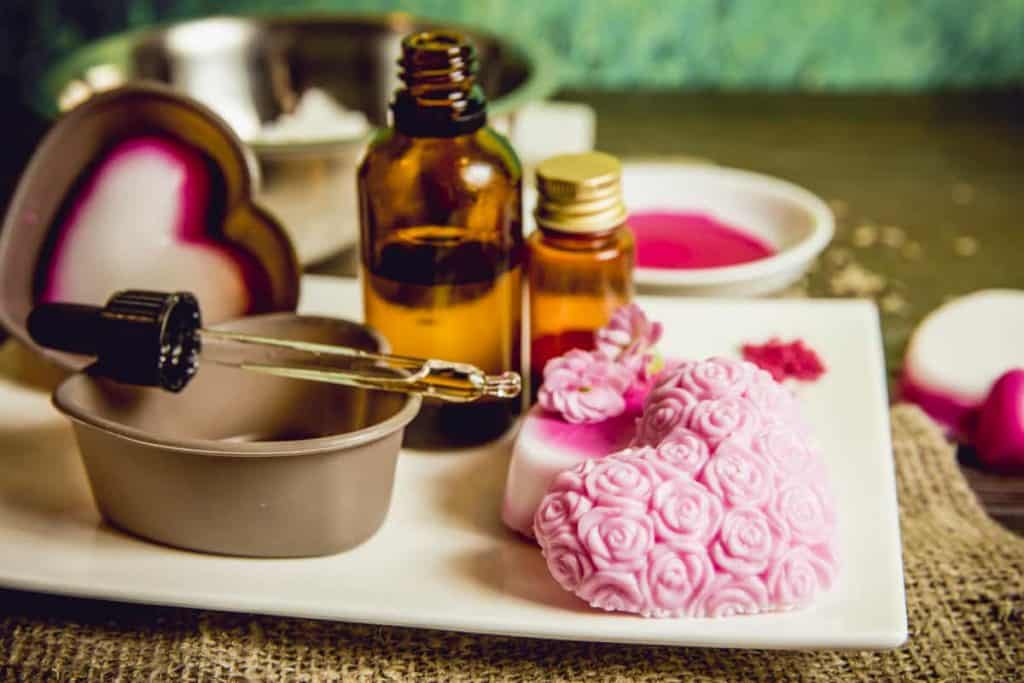
5 troubleshooting tips on how to make melt and pour soap lather more
Soap making is a learning process. Don’t feel bad if your batch of newly made soap doesn’t turn out as expected. Sometimes the answer to your woes is simply that the soap base wasn’t intended to have high lather.
Which leads us to our first tip…
Tip #1: Not all soap lathers equally
If you want oodles of lather, the best advice is to select a melt and pour base that is high in lathering properties. Because, not all soaps are intended to have high lather.
The oils and fats used in a soap recipe determine the finished qualities of the bar.
For example, recipes using a high ratio of olive oil will never produce big lather. Instead, olive oil has gentle and skin-conditioning properties. (It’s great for those with sensitive skin.) On the flip side, it’s very low on lathering.
But it’s fair to say that many (or most) people enjoy using a soap bar that lathers well. (After all, who doesn’t like bubbles?)
That’s why most melt and pour bases contain ingredients such as sorbitol (a type of sugar alcohol) that boost lathering capabilities. A glycerin soap base also provides stronger lather.
Stephenson’s (a popular manufacturer of soap supplies) has a product matrix which rates each MP soap base by its foaming (lathering) ability on a score from 1 to 10.
For example, they give their “jelly soap” base a foaming score of 3, which produces little bubbles. “crystal African black” soap base has a higher foaming score of 8.
Somewhere in the middle lies milk soaps which provide average lather. Stephenson’s goat milk soap base has a foaming score of 5.
Their “crystal SLS free” soap base has a high foaming score of 9, making it a high-lather soap. (It’s free of sodium lauryl sulfate, a harsh surfactant commonly found in pre-made soaps.)
The takeaway: If your M & P bar doesn’t lather, maybe it’s simply because it was never designed to produce big bubbles.
Tip #2: The role of water hardness
The quality of water you use in soap making has a huge impact on the finished soap. Ideally, it’s best to use distilled water when whipping up a batch of suds.
Distilled water is free of minerals and deposits (such as calcium and magnesium) which can interfere with a bar’s ability to foam and lather.
If you used hard water to make your M & P homemade soap, this may contribute to its lack of lather.
And, if you have hard water at home, you’ll know that most of your sudsy products such as shampoos, body wash, and soap simply don’t produce as much lather as they should.
Tip #3: Add friction
Some soap bars need a bit of coaxing before they lather.
So add some friction the next time you use that bar of soap and try rubbing it vigorously against a washcloth, or loofah.
Tip #4: Just because it doesn’t have big lather, doesn’t mean it’s not cleansing
We often equate the amount of lather and bubbles created while washing up to a soap bar’s cleansing effectiveness. The bigger the bubbles, the cleaner you get, right? Not necessarily.
For example, tallow-based soaps are conditioning and have a creamy lather, but don’t produce enormous bubbles or lather. But that doesn’t mean tallow soaps don’t help remove germs and bacteria from your hands.
The best soap bars strike a balance between cleaning, moisturizing, and lathering.
Tip: If your latest batch of M & P soap didn’t turn out as planned, try switching to another type of brand. When starting out, it’s best to make smaller batches until you find a recipe that you love.
Tip #5: Buy from reputable manufacturers
There are many soap making kits you can buy online, and some of them are junk.
Stick with reputable soap manufacturers. For melt and pour soap bases, try Stephenson’s or Crafter’s Choice. (And no, I’m not paid to name drop!)
Experienced soap makers are a treasure trove of wisdom. Ask them which brands they prefer.
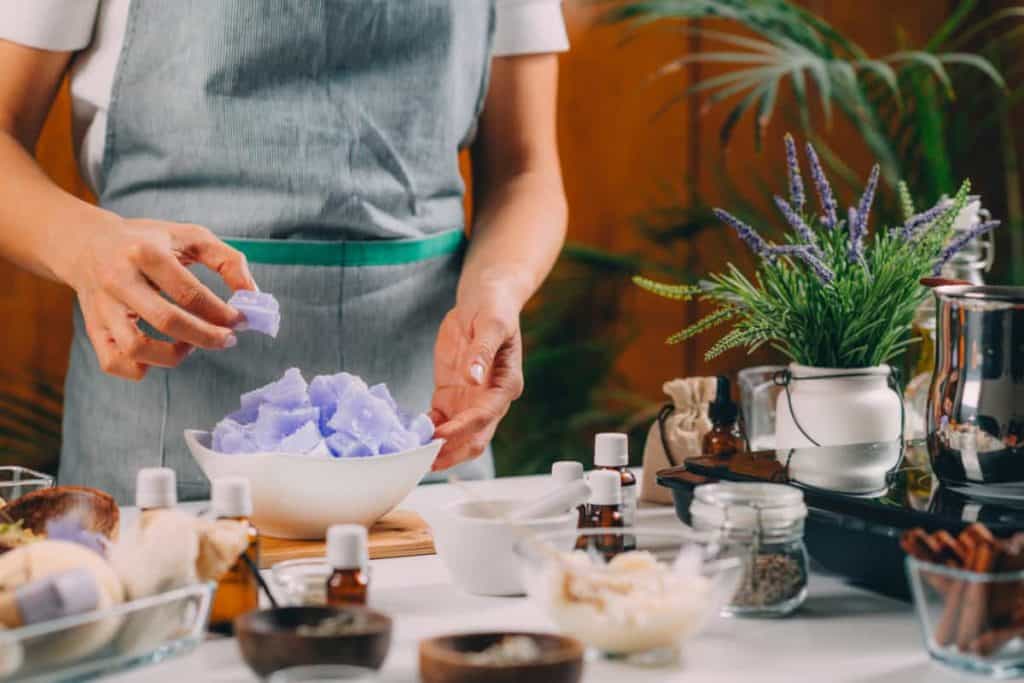
What about adding sugar to melt and pour soap?
When you add sugars or sorbitol to cold process soap, they boost lather and act as a humectant which draws moisture to the skin. Other high-sugar liquids such as wine, fruit juices, and honey also work in much the same way in cold process.
But, when you add sugar to melt and pour soaps, it doesn’t quite work the same way. Adding sugar to melt and pour will work more like an exfoliant—think of a sugar scrub.
So how much sugar can you add to melt and pour? A good amount of sugar to add is around 1 teaspoon per pound of soap.
Can you add other oils to melt and pour?
While some vegetable oils add lather and bubbles to cold or hot process soaps, they don’t work that way in melt and pour.
Instead, adding oils to your M & P recipe may boost the bar’s moisturizing properties. For example, sweet almond oil, shea butter, or argan oil may add skin nourishing qualities.
One important thing to remember is to avoid adding too much extra oils to your M & P soap ingredients. Adding too much can create an overly soft bar.
Add about 1 teaspoon of carrier oil per pound of soap. For body butters, keep it to around 1 tablespoon of butter per pound of soap.
What can you safely add to melt and pour soap?
Melt and pour soap making is a fun and easy way to experiment with soap additives, colors, and embeds. Get creative (so long as you avoid adding too much of any one ingredient!).
So, what can you add to melt and pour soap without ruining it?
- Botanicals (use only dried flowers or herbs)
- Clays
- Colorants
- Embeds (other soap chunks or small decorative items)
- Essential oils and/or fragrance oils
- Exfoliants such as coffee grounds, sugar, ground oats, or sea salt
- Glitter
Related questions
Why does my melt and pour soap have moisture on it?
Glycerin is a natural humectant which draws moisture to the skin. Since most M & P soap bases contain a high amount of vegetable glycerin, it quickly develops moisture beadlets (which can look like sweat). The glycerin soap absorbs and draws moisture from the environment where it concentrates on the surface of the soap.
What’s the best way to store melt and pour soap?
Since M & P bars are prone to the “sweats” it’s best to wrap them in air-tight containers such as sealable plastic storage bins, or plastic wrap.
New to making soap? 🧼❓
👉We have a fantastic overview on the whole soapmaking process here: read our Timeless Guide To Soapmaking.
If you would like to see our soapmaking posts organized by topic type, see our Soapmaking Collection.
Would you like more timeless tips via email?
Fun tips to help you live an independent, self-sustaining lifestyle. Opt-out at any time.


References
- Stephenson’s Personal Care, Crystal Melt & Pour Product Matrix. https://www.stephensonpersonalcare.com/blog/crystal-melt-and-pour-product-matrix#dropdown-product. Accessed June 2022.

Author: Theresa Tesolin
Theresa is co-founder of RusticWise. She helps people unleash their inner DIY spirit by encouraging them to get dirty and make or grow something from scratch.

